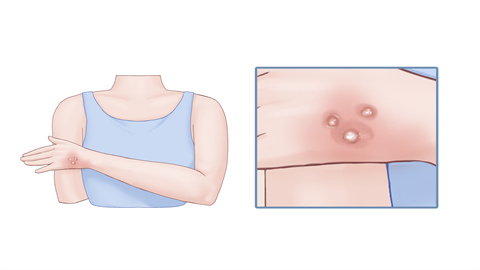What should I do if my child gets a burn blister?
Generally speaking, when a child suffers a burn and blisters form, the correct treatment methods mainly include immediate cooling, avoiding breaking the blisters, properly protecting the wound, scientifically disinfecting and caring for the wound, and seeking medical attention promptly. A detailed explanation is as follows:

1. Immediate cooling: After the child sustains a burn, the affected area should be placed under running cold water immediately or a cold compress applied continuously using a wet towel for 15-20 minutes. Cold water quickly removes heat, reduces damage to deeper layers of skin caused by high temperatures, alleviates pain, and decreases the likelihood of further blister formation.
2. Avoid breaking the blisters: If the blisters are small and intact, do not attempt to puncture them with needles or scissors. The blister's surface protects the wound and reduces the risk of bacterial infection. Forcefully breaking the blister may expose the wound, increase the risk of infection, delay healing, and potentially leave scars.
3. Properly protect the wound: Gently cover the blister and surrounding skin with clean, sterile gauze or medical dressing to avoid friction against the blister. Choose loose, soft clothing when dressing the child to minimize pressure and irritation to the wound area, preventing rupture of the blister.
4. Scientific disinfection and care: If the blister accidentally ruptures, gently rinse the wound with normal saline to remove any remaining exudate. Then disinfect the wound and surrounding skin with iodophor. The disinfection process should be gentle to avoid excessive rubbing that might damage the wound. After disinfection, cover the wound again with sterile gauze to keep it dry and clean.
5. Seek timely medical treatment: If the burn covers a large area, the blister diameter exceeds 1 cm, the burn is located on a special area such as the face, eyes, joints, or genital region, or signs of infection such as redness, swelling, pus discharge from the wound, or fever in the child occur, take the child to the burn department of a hospital as soon as possible.
In daily life, it is important to strengthen supervision of children, keep hot items such as kettles and hot water bottles out of their reach, take preventive measures in advance, and reduce the risk of burns.




